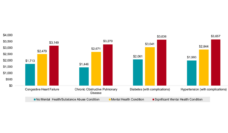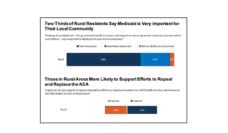Decentralized political power in the United States complicates health policymaking. Congress, the president, and courts all play major roles in developing and implementing health policy, while state governments also retain considerable autonomy over health care. This complexity allows the executive branch more flexibility to implement its policy preferences, but it also creates more barriers. In a commentary for the Journal of General Internal Medicine, we explored these interactions in the Trump Administration’s push to implement work requirements for some Medicaid recipients.
After Congress failed to repeal the Affordable Care Act and limit Medicaid eligibility in 2017, the Trump Administration used its authority over Medicaid to encourage states to reduce eligibility. Section 1115 of the Social Security Act allows the Department of Health and Human Services (HHS) to waive federal requirements for state Medicaid programs. This allows states to pursue demonstration projects to adapt Medicaid to specific state needs or provide data for improving the program.
The executive branch retains discretion over types of waivers that it approves. In January 2018, HHS issued guidance to state Medicaid directors that de-emphasized coverage expansion as a goal and encouraged states to submit plans requiring some adults to prove that they were employed or engaging in job-related activities (like education or job searching) to access benefits. If all states implement work requirement waivers, 1.5 to 4 million people could lose coverage.
However, there are two catches to implementing health policy through a waiver strategy. First, while the federal government can encourage states to seek certain types of waivers, states decide whether to apply. Second, opponents of waivers can challenge their legality in court.
Further iterations of federal initiatives, court decisions, and state elections will add to the complex dance of Medicaid policy evolution.
On the first point, early in 2018, it appeared that the Trump administration’s invitation would be warmly received. Republicans, who favor work requirements, controlled 34 of 50 governorships and two-thirds of state legislative chambers. By September 2018, 14 states had officially submitted applications for work requirements, with numerous other states seriously considering them.
However, state elections in 2018 and 2019 saw large opposition gains. Democrats won eight additional governorships and netted eight additional legislative chambers, while narrowing Republican majorities in numerous other state legislatures. As a result, the environment became considerably more hostile to work requirements. Incoming Democratic governors who replaced Republicans in Maine and Kentucky have abandoned work requirement waivers approved by HHS, while Michigan’s new Democratic Governor signed legislation weakening that state’s approved work requirements. Virginia, where Democrats won both houses of the legislature in 2019, appears poised to drop its efforts to impose work requirements that Republicans previously negotiated with a Democratic governor as a concession for accepting the ACA’s Medicaid expansion.
Opponents in Kentucky and Arkansas also sued to block work requirements, winning in district court when federal Judge James Boasberg ruled that that work requirements were at odds with the Medicaid program’s fundamental purpose of providing health insurance. The case is currently on appeal at the U.S. Circuit Court of Appeals for the District of Columbia, which heard arguments in October 2019. Until the case is resolved, all states with approved work requirement waivers have paused implementation.
Paradoxically, the complexity of the US political system both enlarges and constrains the president’s policymaking abilities. When Congress failed to cut Medicaid, the Trump administration appealed directly to states to toughen program eligibility standards. Opponents, however, thus far have been able to turn to the courts and gain control of state governments to again stymie the Trump administration’s efforts. Further iterations of federal initiatives, court decisions, and state elections will add to the complex dance of Medicaid policy evolution.
Image by Gerd Altmann from Pixabay















